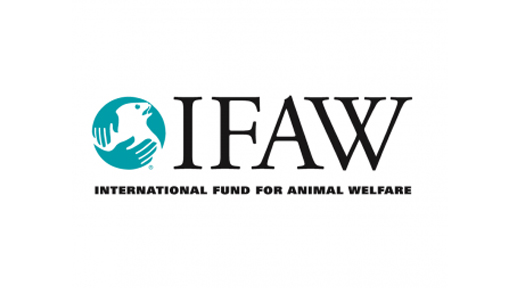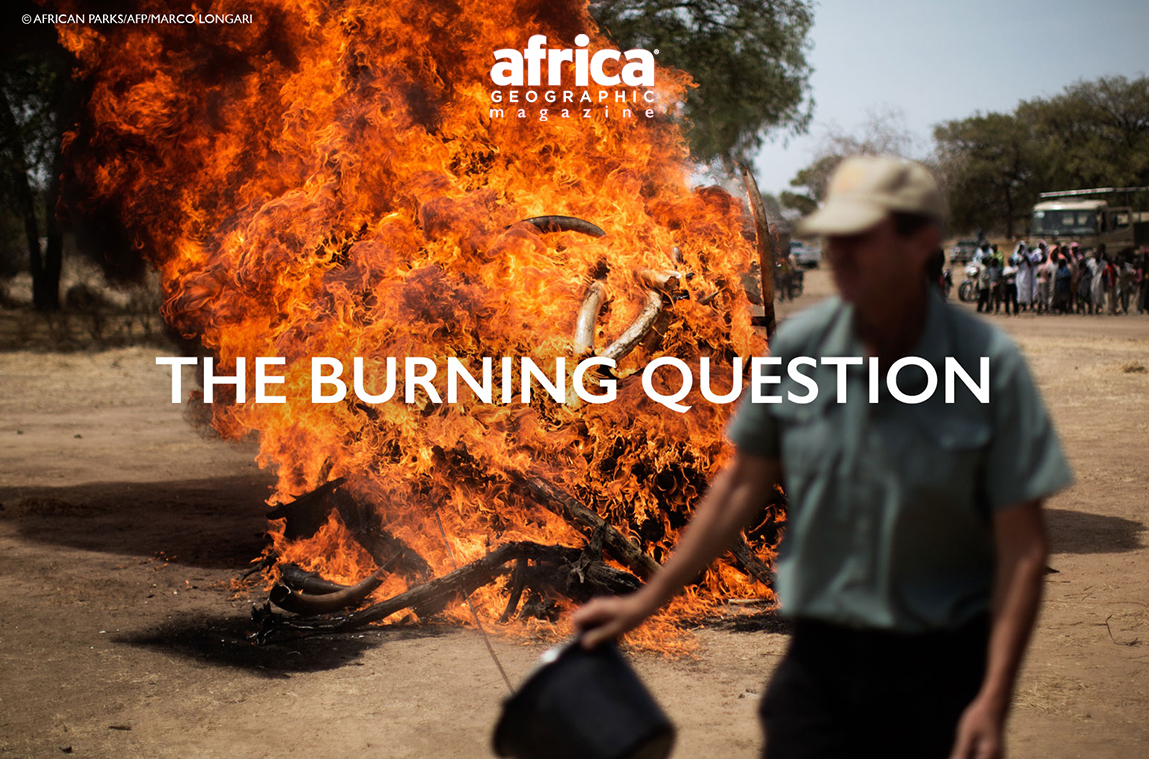
AMERICA'S ONGOING DEBATE OVER THE TRADE IN IVORY


Every tusk costs a life. That was the ominous theme of a 30-second clip on a public-funded billboard in Manhattan’s Times Square. It was direct, bold and all too brief. For one month in the Autumn of 2013, there was an elephant in New York City, flashing on a large screen 24 hours a day for countless Americans and tourists to see. But like so many others fallen victim to gun, arrow and spear, this African giant was eventually taken down for its ivory.
Though far removed from Africa, many Americans are disturbed by the thought of elephants being slaughtered for their tusks. It’s a crisis that’s prompted anger, sadness and an outcry to end it.
It also compelled US federal and non-governmental organisations to act. In 2013, President Obama issued a series of orders to institute an almost complete ban on the commercial ivory trade. Various US-based NGOs, such as the Clinton Global Initiative and the Wildlife Conservation Society, bolstered funding efforts to increase law enforcement, impose stiffer penalties for wildlife traffickers, and ensure better inter-agency cooperation. And then there was the public burning in Colorado in November 2013 of roughly six tons of stockpiled ivory.
The thinking behind this united approach is simple – the only way to end the killing is to adopt a zero-tolerance policy, and the feeling in the US is almost unanimously behind eliminating the poaching. But that’s the easy part.
There are two fundamental differences of opinion in the US about the ivory trade. The first calls for temporary regulated continuation of the trade to satisfy current ivory appetites while simultaneously chipping away at demand. The second follows a more aggressive strategy of banning the trade outright, combatting wildlife traffickers through enhanced policing measures, doing away with reserve supplies, and creating public awareness in one fell swoop. So which is the better approach? I spoke with a couple of American wildlife conservationists to get their take.
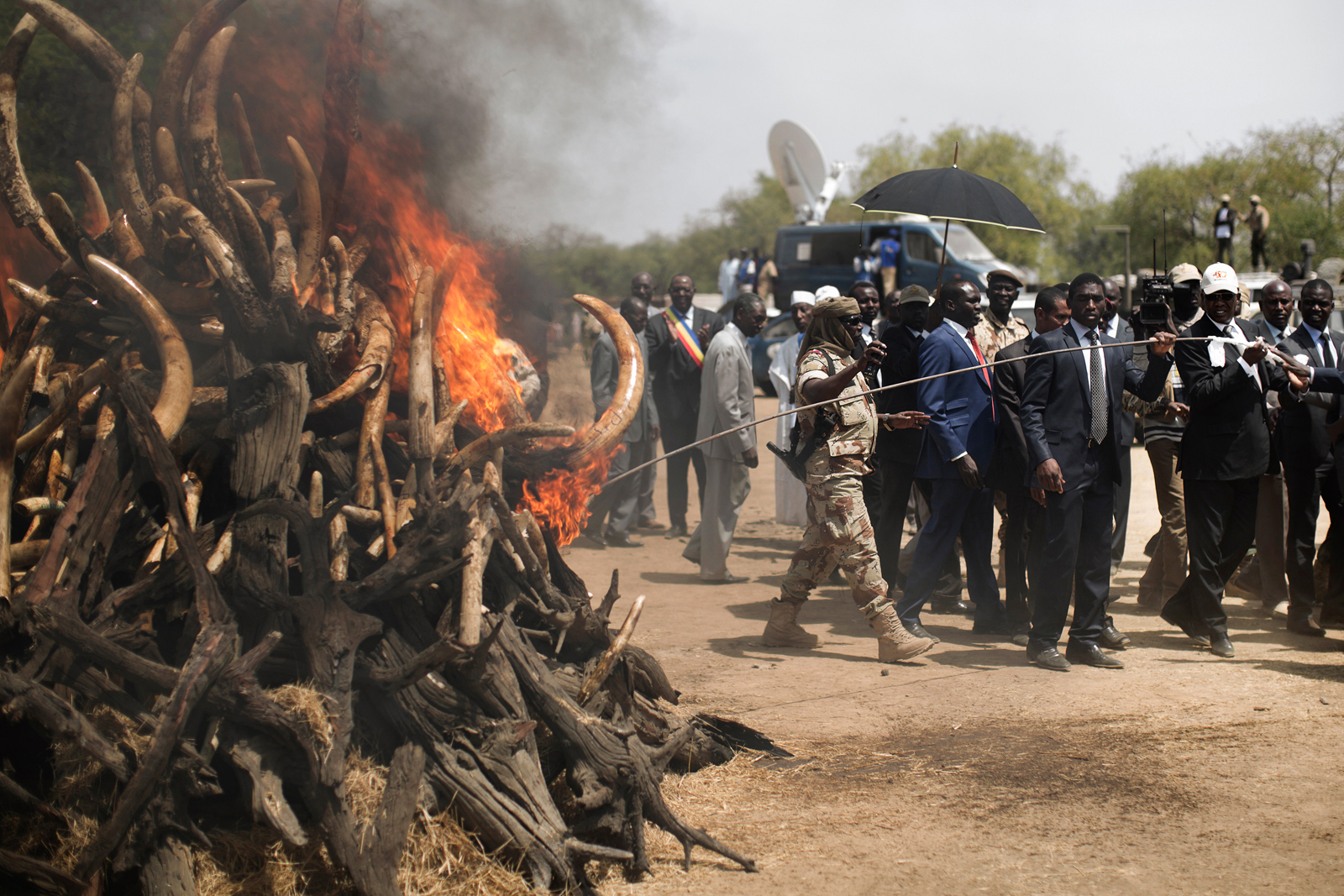
©African Parks/AFP/Marco LongariI
‘Having lived and worked in Africa since the late 1960s and Asia since the 1970s, I’ve learned that corruption is so endemic in the major ivory supply and consumption countries that law enforcement will never succeed in making even a small dent in halting ivory trafficking and the poaching of elephants,’ says Dr Dan Stiles, a Montana native and conservationist who’s spent years studying global ivory markets. He wastes no time explaining his lack of faith in recent bans on commercial sales. ‘The message of zero tolerance is not sent to poachers or traffickers; it is sent to the NGOs who sponsor it, and to the public of mainly Western countries who contribute money to those NGOs.’
The ban consumes more illegal ivory while leaving demand untouched
Stiles says that ameliorating the trafficking through increased law enforcement strategies and burning contraband stockpiles is altruistic but impractical and economically flawed. ‘To turn off supply while demand remains high is like running your house heating and air-conditioning simultaneously. It just consumes more energy and achieves no temperature change. The ban consumes more illegal tusks while leaving demand untouched. It is an extremely bad policy, as the great rise in poaching rates after the decision demonstrated. Demand reduction should come first – then start reducing supply.’


While he certainly sees the trade as evil and is working tirelessly to expose it through countless hours of research, Stiles will not back a complete commercial ban for the time being. ‘Demand reduction is one way, certainly the best and most long-lasting, but this approach will take many years,’ he explains. ‘Elephants can’t wait that long. The most sensible thing is to provide legal raw ivory to the factories that currently buy poached tusks in China and possibly Thailand if the latter can implement an effective regulatory system. Demand is highest in those two countries. It is imperative that the speculative hoarding occurring now in China be stamped out. Speculation and uncertainty about supply are what is wiping out elephants, not so much consumer demand for worked ivory, though that is, of course, a factor.
The message from stockpile destruction is: buy as much ivory as you can afford now, it’s getting scarcer
His arguments are not unsound. Since 2011 the price of ivory in China had skyrocketed, taking off right around the time when ivory stockpiles were destroyed in Kenya. Recent studies funded by Save the Elephants revealed a tripling of ivory prices in China over the last four years. That upswing, according to the study, is increasing the poaching of African elephants. Stiles says, ‘the message sent to ivory speculators by the stockpile destruction is, buy as much ivory as you can afford now; it is getting scarcer.’
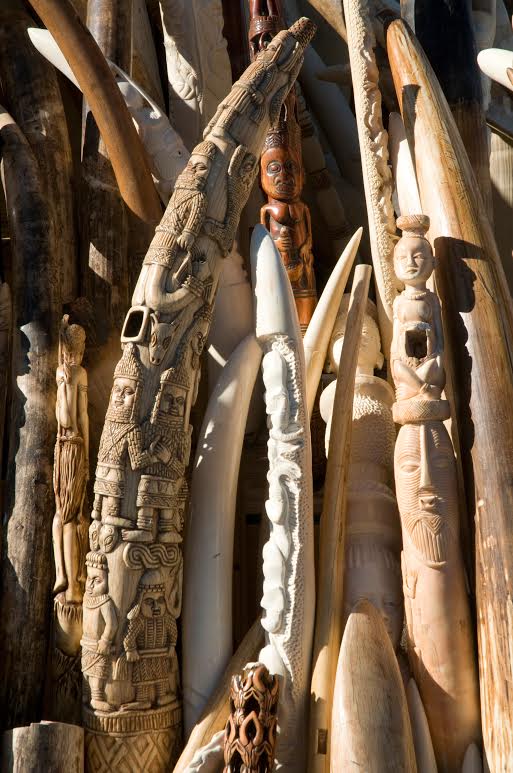
Chatting with African Wildlife Foundation (AWF) CEO Patrick Bergin felt like conversing with an old friend. He’s soft-spoken and articulate. His wealth of on-the-ground experience in African wildlife conservation and successful implementation of species survival programmes has led him from conservation project officer to his current role as leader of the Washington DC- and Nairobi-based organisation. His initial response to the question of the ivory trade pulls no punches. ‘Elephant poaching is not simply wildlife crime. It directly correlates with other illegal activities such as terrorism, drug smuggling and other high levels of organised crime. We must send the unambiguous message that the time for this is over.’
In July 2013, Bergin was appointed by President Obama to serve on the Federal Advisory Council on Wildlife Trafficking under the US Department of Fish and Wildlife Services and the Department of the Interior. The eight-member panel, co-chaired by Secretary of State John Kerry, Secretary-General Eric Holder and Secretary of the Interior Sally Jewell, provided specific recommendations for combatting and ending the ivory trade. Since confiscated stockpiles cannot legally go onto the commercial market, the decision to destroy them was seen as a powerful public statement with the potential for spillover effects within ivory-hungry nations like China.
If you want to show off your wealth, buy a painting
To their credit, Hong Kong followed suit when in May 2014, it began burning its 28-ton stockpile of seized ivory. For Bergin, this success is attributed to the shift in global opinion and the need to work towards eliminating the ivory trade. ‘There is an amazing worldwide consensus that African elephants can no longer afford the risk of this situation. The only way to handle it is to suppress the trade completely. There is no need to buy ivory anymore. If you want to buy expensive items to show off your wealth, buy a nice piece of art such as a painting.’
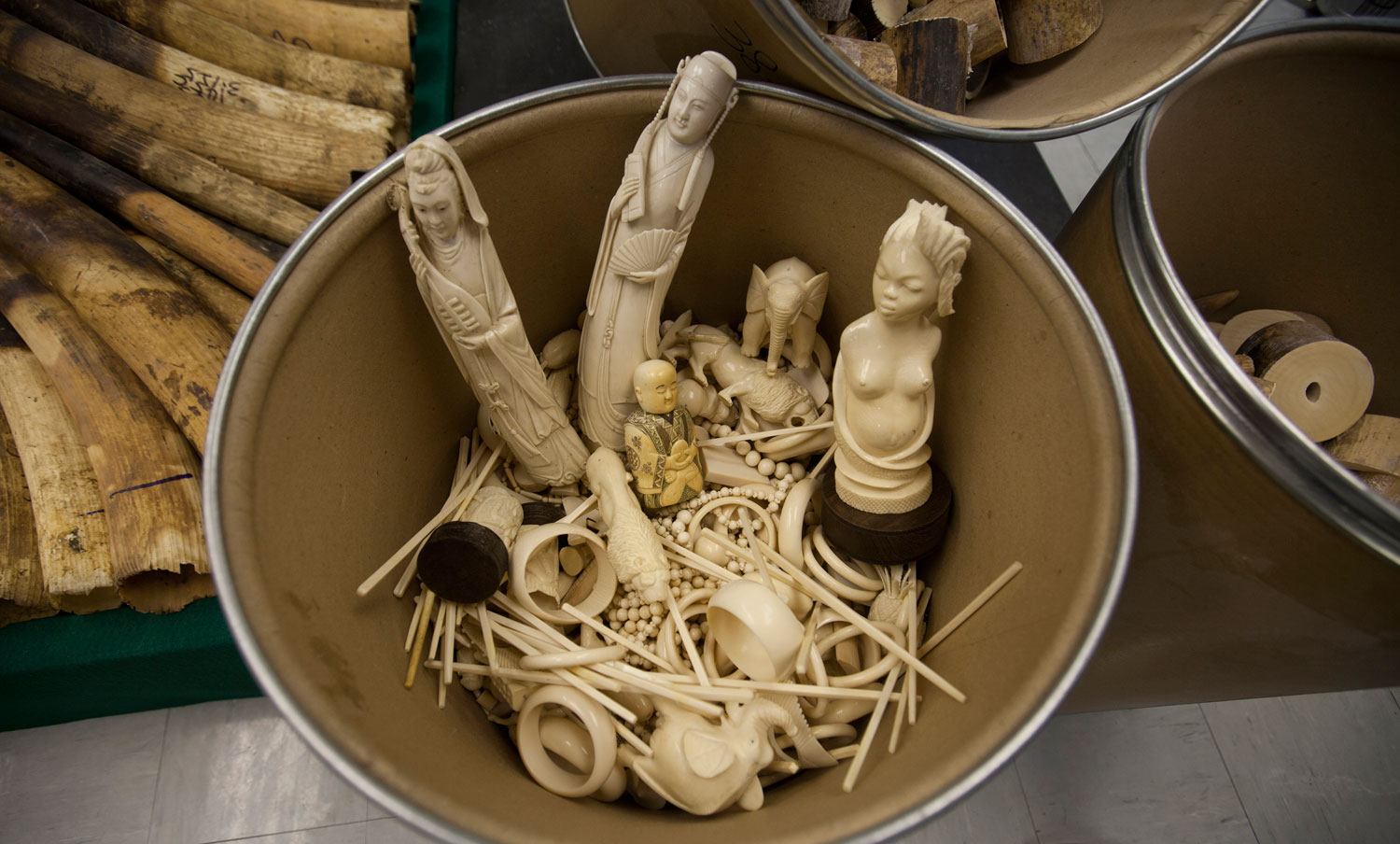
©IFAW/Alex Hofford
Bergin’s sentiments show that he has grown tired of negotiating with a bloody trade that’s existed for far too long. It was especially devastating during the 1970s and 1980s when Africa’s elephant population dropped from roughly 1.3 million to 600,000. It wasn’t until CITES banned the international ivory trade in 1989 that elephant numbers started to recover in various populations, for a short period at least. The international ban still applies but in 1997, CITES downlisted elephant populations in Botswana, Namibia and Zimbabwe from Appendix I to Appendix II, thus permitting a limited trade. The result was a one-off sale of ivory stockpiles from these countries in 1999. In 2000, South African elephants were downlisted to Appendix II, and Cites approved another one-off sale of stockpiles from all four countries in 2008.
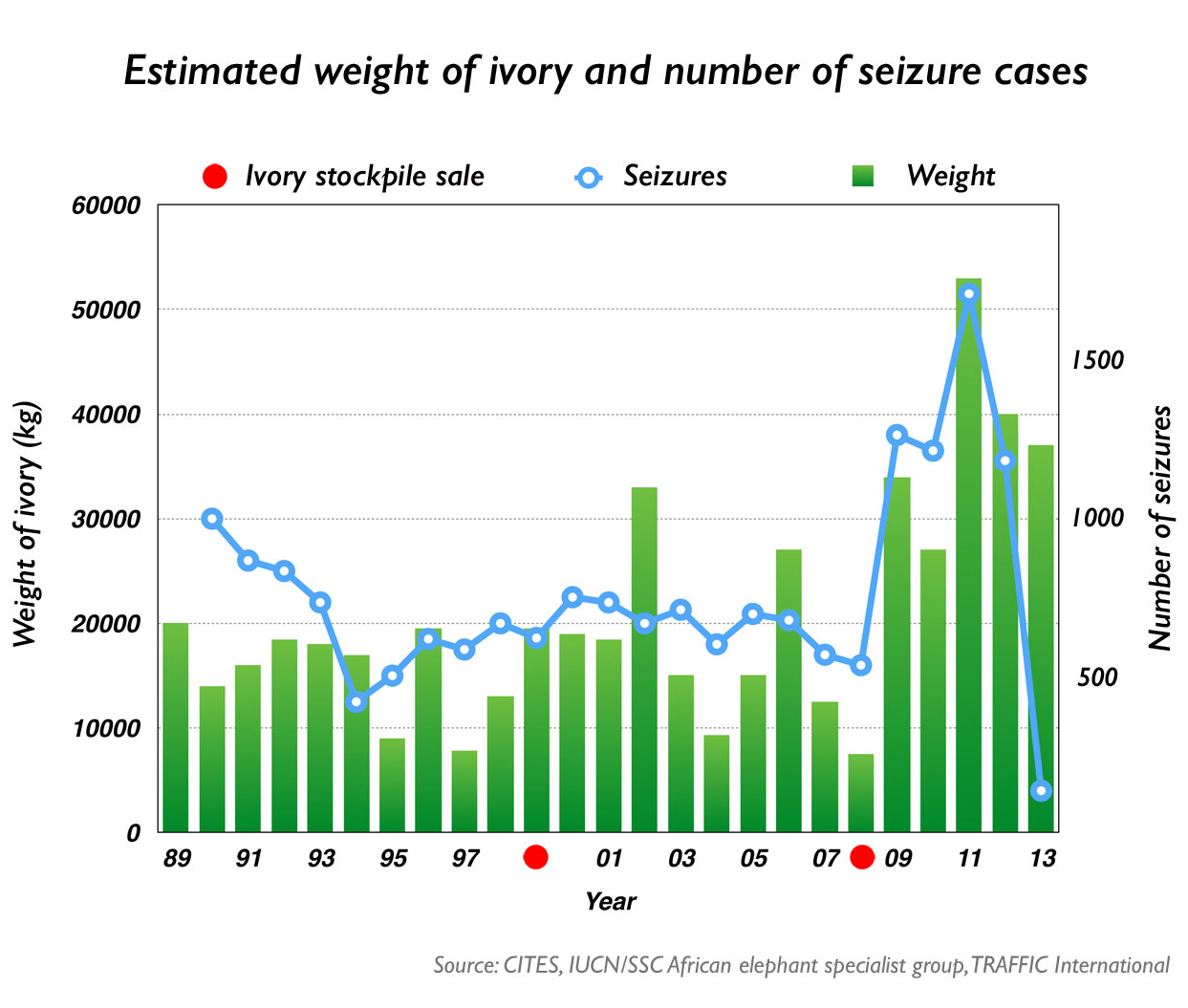 ‘The two objectives were to put money from those sales back into the hands of environmental law enforcement to increase conservation efforts further and to provide support and revenue for local communities,’ Bergin says. The experiment did not work, he continues to explain, because no one anticipated China’s tremendous economic rise, the huge increase in disposable income in that country, and the significant level of money laundering made possible by that new prosperity.
‘The two objectives were to put money from those sales back into the hands of environmental law enforcement to increase conservation efforts further and to provide support and revenue for local communities,’ Bergin says. The experiment did not work, he continues to explain, because no one anticipated China’s tremendous economic rise, the huge increase in disposable income in that country, and the significant level of money laundering made possible by that new prosperity.
Demand in Japan fell due to consumer awareness about the connection between purchasing ivory and poaching
Those two one-off sales are perhaps at the heart of the disagreement between conservationists. Many posit that the transactions increased the demand because it was in direct contradiction to the international ban. But, while Stiles agrees that they were a bad idea, he doesn’t view them as directly causing an increase in elephant poaching. Recent research, he claims, shows that demand has decreased since 2012. Stiles also informs me that demand in Japan eventually fell because of effective consumer awareness about the connection between purchasing ivory and the killing of elephants. This is the one issue on which US organisations and wildlife professionals from both sides tend to agree. When done right, eliminating demand through awareness and education measures can yield great benefits. But it still echoes Stiles’ warning that NGOs are fighting against a shrinking window of opportunity as elephants continue to be killed at an alarming rate.
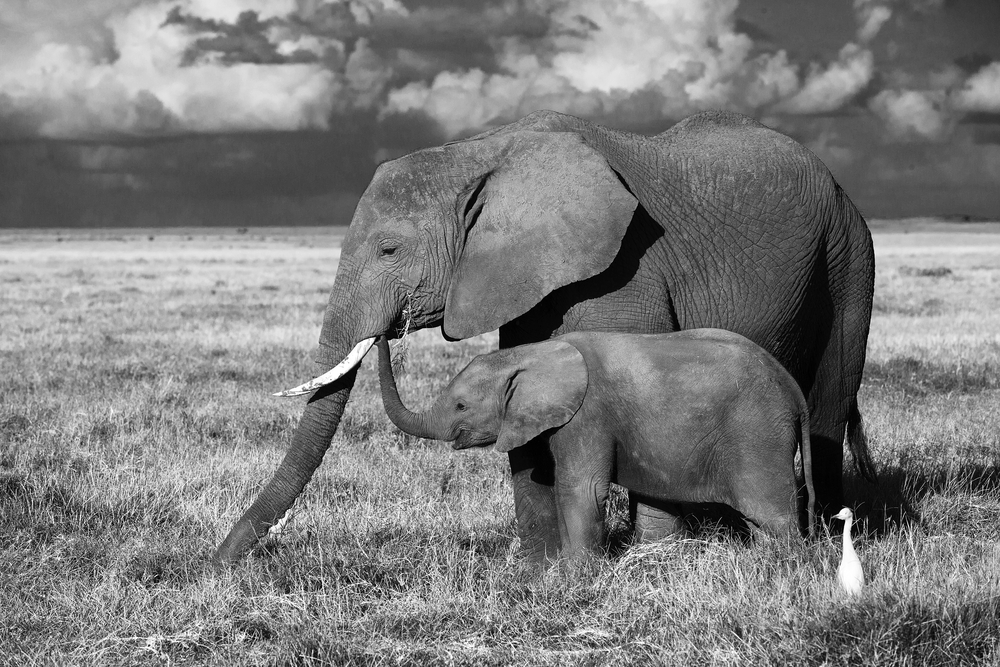
AWF is pushing hard to eliminate the appetite for ivory through various education measures with the belief that the market will change when the people do. Through a partnership with NGO WildAid, they have issued key public service announcements in China with popular Chinese personalities like basketball player Yao Ming and actor Li Bingbing supporting the cause. Bergin is optimistic that Chinese people can and will have a dramatic change of heart. ‘A lot of push-back and speculation revolves around the idea that the Chinese have been buying ivory for thousands of years, so why would they stop now? But it’s important to understand that they are changing. I’ve travelled to China to perform public speaking lectures and have witnessed public campaigning there against related issues such as shark fin soup and using bear’s gallbladders in traditional medicine. There’s no reason to believe that attitudes and beliefs, even very old and engrained ones, are not capable of changing – and changing quickly.’
Similarly, President Obama invited all African heads of state in good standing with the US and the African Union to a US/Africa Leaders Summit this week. While the agenda is primarily focused on trade, investment and infrastructure, it is understood that the issue of wildlife trafficking cannot be ignored. ‘What must change is the willingness of these leaders to make this a topic of discussion, especially with the Chinese government,’ Bergin says. ‘Africa wants to do business with China, and that’s fine. But they need to make a noise and say that what’s happening is a problem when outsiders poach their wildlife.’
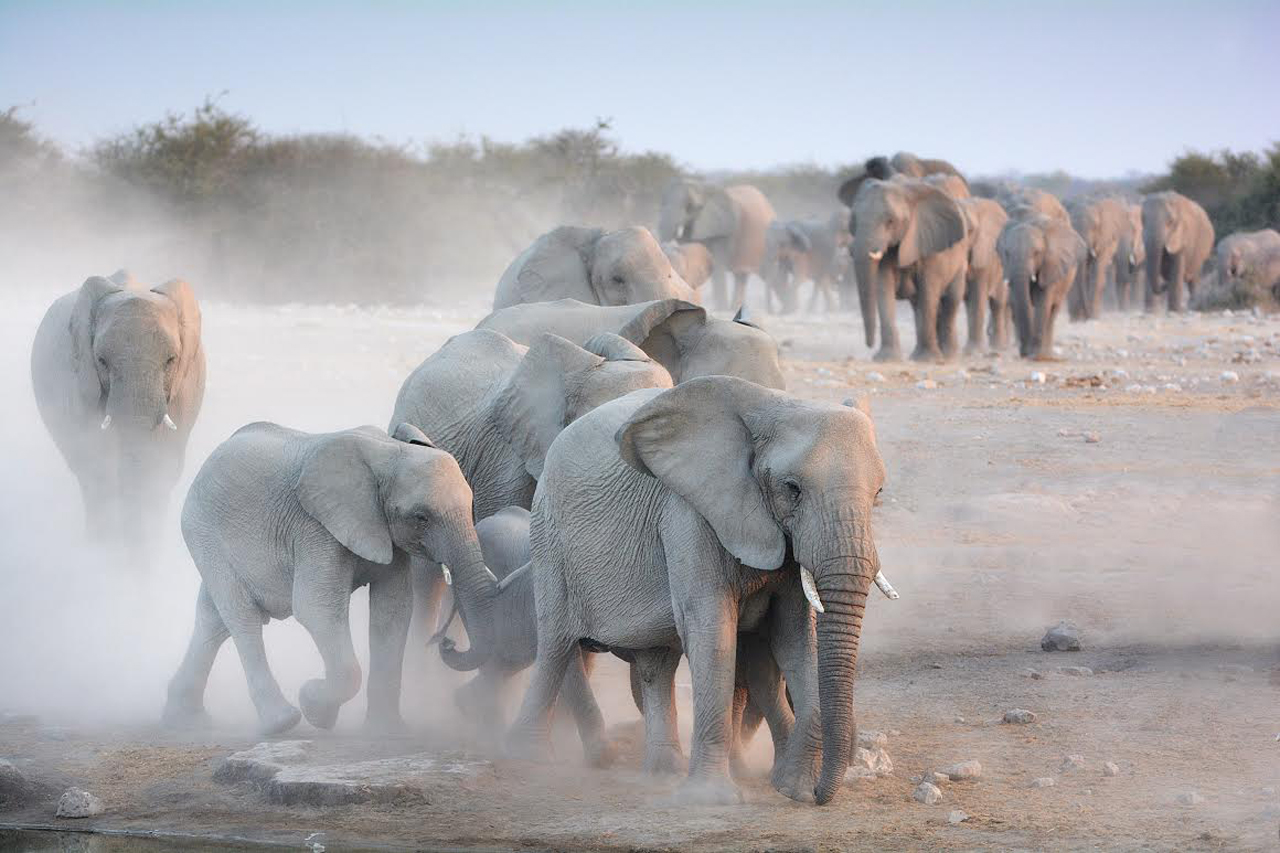
Education and awareness seem to be the key to winning the hearts and minds of those likely to purchase ivory. For now, it seems to be garnering some success. But is that good enough? Are there any alternative methods we’re overlooking? And if not, which of the two contested strategies works best: a limited, regulated trade, more prosecutions, a complete ban and the subsequent destruction of contraband stockpiles? Is there some sort of compromise US lawmakers and opposing conservationists can agree on? It seems I’m now left with more questions than answers.
As an American who loves Africa’s wildlife, I, too, am sickened by the unnecessary killings. I hope that whichever direction my country goes, it will help the cause rather than hurt it. Meanwhile, on the other side of my world, what is left of Africa’s elephants resume their march toward a perilous future. The only certainty that can be drawn from this impasse is that if we allow any decrease in elephant conservation initiatives, the outlook for these magnificent animals will be increasingly dire. And much like the temporary billboard of an elephant displayed in Times Square, one thing the real ones are running out of is time.
ALSO READ: Japan – an illegal ivory trader’s heaven
Contributors
With thanks to the following organisations for their contributions of information and imagery:
 MICHAEL SCHWARTZ is an American freelance writer, consultant and member of the International League of Conservation Writers. His love of Africa began early in life, and he has since travelled throughout the continent’s southern region. With a BA in Journalism and an MA in African Studies, he has worked as a project specialist and researcher for several USAID-funded initiatives in Kenya, South Sudan, Uganda and Zimbabwe. He has also volunteered as a humanitarian in Malawi. An avid outdoorsman and photographer, Michael desires to continue assisting in efforts to preserve Africa’s pristine wilderness and magnificent wildlife. You can view more of his work on his website.
MICHAEL SCHWARTZ is an American freelance writer, consultant and member of the International League of Conservation Writers. His love of Africa began early in life, and he has since travelled throughout the continent’s southern region. With a BA in Journalism and an MA in African Studies, he has worked as a project specialist and researcher for several USAID-funded initiatives in Kenya, South Sudan, Uganda and Zimbabwe. He has also volunteered as a humanitarian in Malawi. An avid outdoorsman and photographer, Michael desires to continue assisting in efforts to preserve Africa’s pristine wilderness and magnificent wildlife. You can view more of his work on his website.
To comment on this story: Login (or sign up) to our app here - it's a troll-free safe place 🙂.![]()



